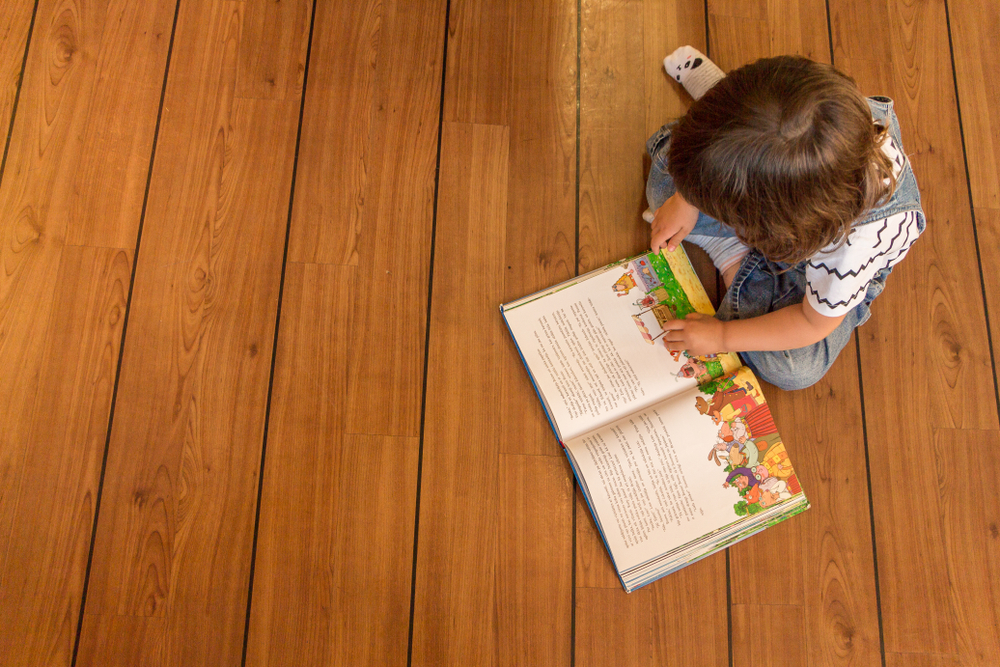Top 7 Common Themes in Children’s Literature: Tips for Bringing Them to Life
Publish Your Book View 50% off Pricing
Are you planning to write a self-development book for children? Do you need help discovering what children’s literature typically includes? If yes, you have come to the right place. This article is specially crafted to help you create content that genuinely provides value to kids.
Remember, when aiming to nourish younger minds, you need to be familiar with their common needs. This allows you to address the topics that are essential for them to learn. Resultantly, the children make the most of your content and improve themselves better.
To help you create easily digestible kids’ literature, we are going to introduce you to 7 themes that hold key importance in early childhood education. In addition, we will provide you tips on how you can develop persuasive and engaging content on these themes. So, continue going through this article, and don’t miss out on anything. Ready to dive in? Let’s roll.
Table of Contents
Toggle7 Most Recurring Themes In Children’s Education
Children’s literature includes many themes that keep repeating throughout their childhood journey. Among them, here are some of the most recurring concepts that are considered crucial for kids.
1. Growing Up And Self-Discovery
Since children love coming of age, the themes of growing up and self-discovery best resonate with them at an early age. Stories related to this topic help kids learn how to develop their characters. Also, they reflect on how to face the challenges of growing age.
This theme not only describes the issues of growing up but also demonstrates the benefits and ways to enjoy every moment of life. Moreover, it also paves a path toward self-discovery. Reading this type of story sparks motivation in children and makes them dream big in their lives.
2. Friendship And Loyalty
Talking about friendship and loyalty has never been old yet. Rather, it is one of the most recurring concepts that children are taught. It basically emphasizes the value of having good relations with friends. Also, this theme discusses the value of loyalty in friendship.
This topic encourages kids to make new friends and strengthen connections with each other. It helps them understand that true friends stand by each other in their ups and downs. Also, it aids them in perceiving that loyalty is key to strong bonds.
3. Good And Evil
At early ages, kids practice what they learn. This is the most appropriate time to introduce them to good and evil through stories. This includes highlighting the benefits and moral value of good deeds and the consequences of bad practices. This theme greatly impacts young minds.
When they see good characters gaining appreciation, rewards, and triumph, it entices them to be like them. Similarly, when they find evil characters being punished or defeated, it makes them dislike those actions. This helps them gain a better understanding of what to do and what to avoid.
4. Overcoming Challenges
Children’s literature often has stories that discuss bravery and courage. This concept is used to teach the significance of facing challenges fearlessly. Building a problem-solving mindset from the beginning helps kids tackle every type of situation bravely.
Encountering characters not losing hope, coping with problems, and finding solutions makes kids perceive that they can solve every problem. Such stories assist children overcome their fears. With no fear in their minds, they learn to cope with life’s challenges and solve matters on their own.
5. Honesty And Truth
The growing phase of children is the best time to help them develop good habits. At this stage, they are often educated on the topics of truth and honesty. Both of these traits are closely related to one another and support kids in strengthening their communication and public dealings.
The majority of the stories that explore this theme portray the dishonest person as a villain and the truthful one as a hero. Since kids’ sympathy always leans toward good people, this makes them develop habits like those of heroes. This builds a sense of fairness in them.
6. Loss And Grief
Kids don’t have sufficient knowledge of how to react to loss when pursuing their childhood education. By incorporating the theme of loss and grief in your educational material, you can teach them to deal with damages. Also, you can use this concept to educate them on handling painful situations.
To help kids control their emotions like anger and frustration, you can build emotional fictional stories featuring a character in a bad situation. Such stories develop a habit in children to stay positive and accept their losses without panicking.
7. Family And Belonging
Another recurring theme in children’s syllabus is discussing the role and importance of family relationships. It is a foundational concept in childhood education This often involves throwing light on love, conflicts, and support between brothers, sisters, parents, or other family members.
By depicting the strengths of family bonds, this theme enables kids to build strong connections with their dearest. This not only contributes to the healthy growth of children in a family but also gives them confidence in their relationships.
How To Incorporate Themes In Kids’ Literature?
Getting familiar with the recurring themes is not enough to create educational content that resonates with kids. You need to learn effective practices to bring these themes to life. In this regard, here are some proven tips that can help you convert these common themes into compelling stories.
Create Relatable Characters
Remember, characters are the hearts of a story. No matter how great of a concept your material is, it will be less likely to be enjoyed by youngsters if your characters lack relevancy. Therefore, make sure the characters in your story directly relate to the expectations of children.
Keep the interests and challenges of characters age-specific to provide a sense of connection and understanding to kids. This helps them observe how characters reflect aspects of their lives. For example, a character struggling to make new friends in school can better resonate with children.
Use Age-appropriate Language
When creating literature for young minds, the language you use matters a lot. Inappropriate language can make your stories hard to understand for kids. The language barrier can ruin the reading experience of children. That’s why you must avoid creating complexities in your content.
To achieve this objective, use simple language that kids can easily understand. Every word or phrase you incorporate should be familiar to the children. Additionally, string up words using easy-to-understand sentence structures. Don’t describe things in passive voice and compound sentences.
Encourage Interactions
Stories without interactive elements remain empty of learning. Your content must have some practical things that can help youngsters in their learning process. These might include any classroom or outside activity or a question that raises curiosity in children. It enhances the engagement of your content.
For example, after describing a story on the theme of friendship and loyalty, you can encourage young students to help one of their friends. Also, you can include an on-paper activity like answering some questions. This practice enables children to implement their learnings in real life and gain experiences.
Utilize Vibrant Illustrations
Illustrations are key pillars of kids’ content. Without them, kids fail to maintain their interest in reading and learning. They are often interested in seeing the characters, places, and situations they are going through in content. So, to keep them engaged, include stunning illustrations in your stories.
Visual representation of scenes brings life to stories and makes them more interactive. Visuals help convey emotions like fear, joy, and frustration. Also, portraying your message allows you to make your storytelling more effective. The wise use of illustrations, like making them age-appropriate and culturally sensitive, can further enhance engagement.
Ensure Uniqueness In Stories
Uniqueness is the key to distinguishing your educational material from the crowd, especially in the online market. Also, kids are more likely to love unique stories rather than the traditional ones. However, in the abundance of already published children’s material, your work may mistakenly match others. Therefore, try to present recurring themes from different perspectives.
For additional safety to the integrity of your stories, you can capitalize on an efficient plagiarism detector. This tool informs you if your content inadvertently matches someone else’s. Using a plagiarism detection tool, you can ensure that the material you produce doesn’t appear anywhere on the Internet. This practice helps you maintain the originality of your work.
To Sum Up
After going through this article, we hope that you have familiarized yourself with the 7 recurring themes in children’s education. From growing up and self-discovery to family and belonging, we have provided a brief but comprehensive overview of all themes.
Not only that, we have also mentioned how creating relatable characters and utilizing vibrant illustrations can help you bring them to life. Now that you know the effective content development strategies, we expect you will successfully create compelling stories on the above themes.vox





